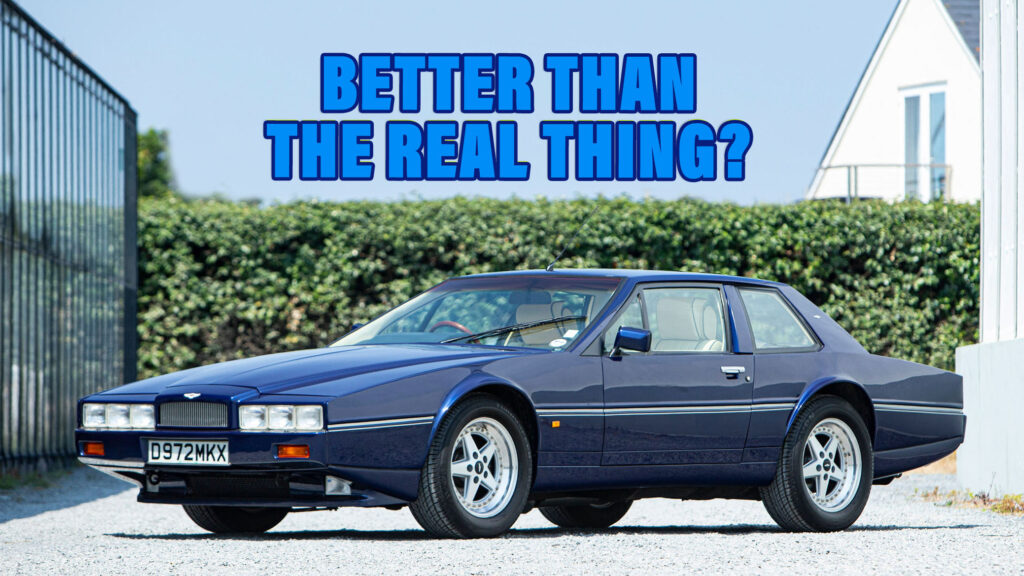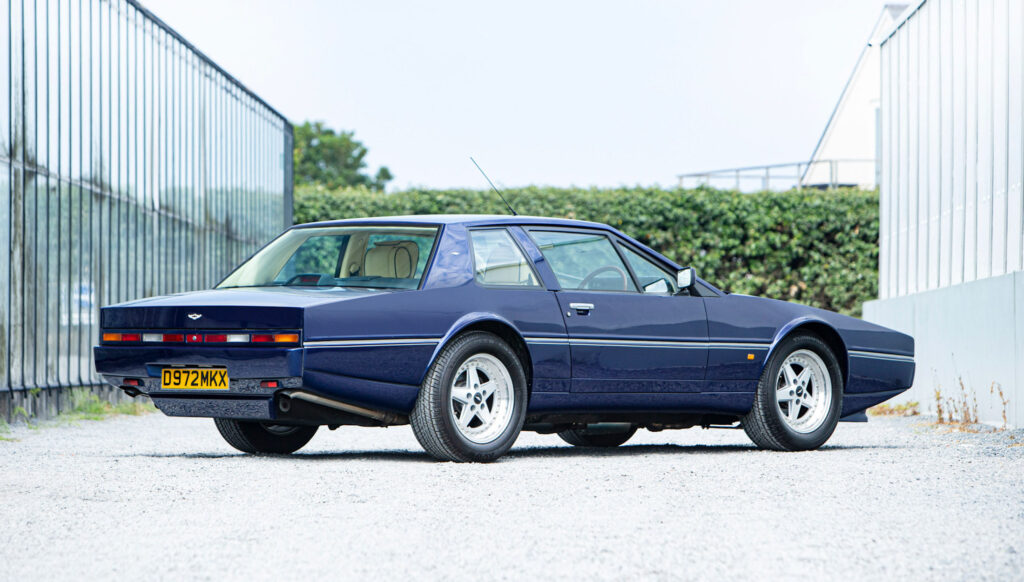Chopped-down Lagonda sedan body was used to keep true styling of new Virage coupe a secret
4 hours ago
 –>
–> 
–>
You’re probably familiar with the the concept of development ‘mules’, prototypes of new cars cobbled together out of mutilated old ones to kick off R&D testing before the real cars are ready to hit the road. But rarely do they look so good that you can’t believe the automaker in question didn’t put them into production.
This Aston Martin Lagonda Coupe is one of those exceptions. Built in 1986, it is a prototype for the Virage coupe that Aston would launch three years later, though you’d never know it to look at. The Virage was based on the wedge-shaped, William Towns-designed Lagonda sedan introduced in the mid-1970s, but obviously featured a much shorter wheelbase and very different curvy styling. So to get testing underway Aston hacked 12 inches (300 mm) out of the four-door car’s floorpan and dropped in an early version of the new 32-valve V8 that would debut in the Virage, plus a ZF five-speed manual transmission.
But while you might expect the result to be as ungainly as Audi’s SWB Sport Quattro, DP (Development Project) 2034 actually looks fantastic – and quite possibly better than the real Virage with its awkwardly high trunk and nasty parts-bin (Opel Manta) headlights. The wedge fad might have been on the wane by the late 1980s, but you can’t help thinking that this car would have gone down well in the U.S., where Aston sold many of the Lagonda sedans.
advertisement scroll to continue
Related: How The Humble Peugeot 505 Saved The Aston Martin Vantage

That wasn’t the plan though, and once its testing duties were done this one-off coupe was mothballed until an Aston customer spotted it, bought it, and had it refurbished to his specification in 1990, reasoning that it would better suit his 6ft 3in (1.9 m) frame than most off-the-peg sports cars of the time.
Doubling the 5.3-liter V8’s valve count helped increase power from the sedan’s 280 hp (284 PS) to 330 hp (335 PS) in the Virage, so this one-off should have already been pretty rapid. But the new owner opted for a fresh engine and a shorter final drive to add some snap to the acceleration, while still retaining a top end of around 150 mph (240 kmh). After finishing the exterior off with a coat of Ford Pacific Blue pearl and a retrim of the interior, which featured simple analog dials instead of the trouble-prone proto-digital gauges in the early Lagonda sedans, the car was ready for the road again in 1993.
Sadly, it doesn’t look like it’s seen much road since, because auction house Bonhams says the mileage stands at just 1,910 (3,074 km). Maybe the new owner will be more inclined to show it off, though having paid £287,500 ($359,600) at Bonhams’ Goodwood Revival sale this September for one of the rarest Astons on the planet, we would understand it if he wanted to keep it safely locked away for another 30 years.
H/T to Silodrome

 <!–
<!– –>
–> 

